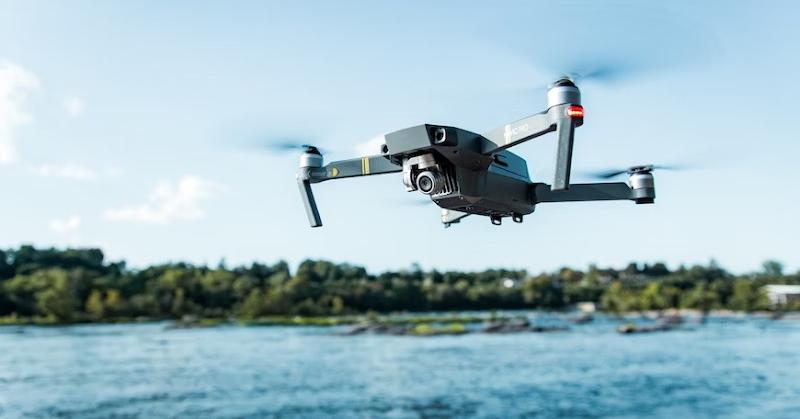Drones—also known as unmanned aerial vehicles(UAVs) —have become progressively ubiquitous in human activities. Although originally meant to be used in military operations, which equally gave it the name ‘Drone’ from the British army’s 1935 radio-controlled aircraft known as Queen Bee, drones have proved useful in many other sectors and industries.
Drones are used in cinematography and videography to take high-quality aerial footage. That is not all; agriculture, education, insurance, and security also apply drone technology to revamp their services.
Besides the industry-specific applications, drones are useful across various sectors to handle emergency services. Drones for emergency work the same way as in all other industries to perform various functions that help revamp emergency response.
Here are some of the roles that drones perform in emergency response:
1. Pre and Post Disaster Incident Surveillance
Incident surveillance is one of UAVs’ most essential tasks in emergencies. A good understanding of the nature of an emergency is crucial to help make appropriate responses and put in place measures to prevent or reduce related incidence in the future.
Drones enable emergency response teams to carry out a top-tier 3-dimensional pre-disaster and post-disaster mapping of the affected area leading to accurate reporting of emergency scenes and attracting the right response based on casualties and needs.
With drones, emergency-prone areas can be kept under surveillance to help provide continuous data on activities in such areas. Knowing the triggers and bolstering preventive intervention to reduce impacts is easier when emergencies occur.
Furthermore, in crime-related emergencies, drones for emergency services are perfect for helping with crime scene reconstruction and helping security teams discover the loopholes that have contributed to the same.
2. Security
Security is a major concern in times of emergencies. Some people take advantage of emergencies as the time to loot and go their way scot-free. Other instances could be the safety of the rescue team, especially if the particular emergency is criminal. Drones can be used to enhance security in such instances to make rescue missions smooth and avoid sustaining any more casualties.
Drones specifically enhanced to detect motions and strange movements can help the security team to detect any strange advances with excellent accuracy. Only a few security personnel can be needed after drone technology is applied in an emergency scene.
With their powerful and accurate mapping of an area, drones can prove a cheap way of bolstering security. Their tenacious nature makes them useful 24/7, a quality humans cannot replace.
3. Search and Rescue
One fundamental assignment that must be done in times of emergency is search and rescue. Lives precede any other concern in emergencies and must be dealt with before any other interest.
Unfortunately, it can be hard to find and rescue affected people in emergencies, depending on the nature of the emergencies. Conducting a search in a wide area becomes extremely cumbersome during specific emergencies like floods. The larger the area, the harder the search and rescue operation, especially when done manually.
Fortunately, drones for emergency response are there to make the search and rescue process easier and more fruitful.
Drones enable first responders to conduct a comprehensive area assessment before deploying rescue strategies, helping them know what they may need to make the process more successful. Fitting emergency response drones with thermal imaging cameras and spotlights enables rescue teams to locate heat signatures and be more successful in their rescue operations.
4. Support Filing Insurance Claims
You may never have thought of drones and how insurance coverage providers can apply them during emergencies. Insurance companies have policies covering various emergencies, including fire, accidents, theft, etc. In the case of materialization of the same, insurance companies have a hard task of proving if the case warrants an insurance claim. As a matter of practice, insurance companies do not cover the insured’s negligence.
Drone technology helps insurance providers to speed up the process of inspection and processing of insurance claims. Accurate non-exaggerated facts can be obtained from drone surveillance. Furthermore, in extreme dilapidation where it is unsafe to access the emergency scene, drones can help the insurance team conduct a remote inspection of the nature of damages to help them process claims.
5. Fire Fighting
Fire outbreaks have become one of the most recurrent emergencies, especially during the summer. Forest fires and residential fires can be very destructive. A faster and zero-blunder response is crucial, especially when lives are involved.
Drones can detect people caught in residential fires and make rescue missions easier and more accurate. In some compromising situations, drones can spray water and carbon dioxide more effectively to help extinguish fires. Their enhanced capacities for area mapping make them useful to help understand the extent of forest fire and help in fire fighting response.
6. Flying Emergency Supplies
Emergency services always come with an extended need for emergency supplies. These include food, medication, water, etc.
Unfortunately, there are times when emergencies occur in areas that are a bit hard to access. Unmanned aerial vehicles make a huge difference, reaching people with the necessary emergency supplies.
In the case of special cases like asthmatics and diabetics who need inhalers and their prescription medicine, drones can help avail these supplies soon enough to save lives. Drones are faster and more versatile, making such operations smoother.
Bottomline
Drones have proved useful in making work easier in various sectors and industries. One of the areas where drones are making worthwhile scores is in emergency services.
Drones revamp emergency services as they can help perform multiple emergency-related assignments with increased ease and accuracy. Unmanned aerial vehicles can transport emergency supplies like food and medication and help in crime scene reconstruction, enabling appropriate responses from the security team.

